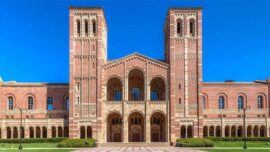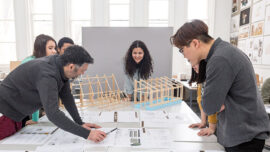
Architecture Art: Exploring the Fusion of Creativity and Structure
Introduction
Architecture is more than just buildings; it’s an art form that blends creativity and structure to create spaces that inspire awe and serve practical purposes. In this article, we’ll delve into the world of architecture art, exploring the historical significance, the creative process behind architectural masterpieces, and the impact of this unique art form on society.
1. The Evolution of Architecture
1.1 Early Architectural Wonders
1.2 Influential Architectural Styles Throughout History
1.3 Modern Architectural Innovations
2. The Artistic Vision of Architects
2.1 Inspiration and Design Concepts
2.2 Balancing Aesthetics and Functionality
2.3 Sustainability in Architecture
3. Iconic Architectural Masterpieces
3.1 The Timeless Beauty of Gothic Cathedrals
3.2 The Marvels of Ancient Greek and Roman Architecture
3.3 The Bold and Futuristic Designs of Contemporary Architecture
4. The Impact of Architecture on Society
4.1 Shaping Communities and Cultures
4.2 Architecture as a Reflection of Identity
4.3 The Socioeconomic Influence of Architectural Projects
5. The Creative Process: From Concept to Reality
5.1 Research and Inspiration Gathering
5.2 Sketching and Drafting
5.3 Turning Blueprints into Tangible Structures
6. The Relationship Between Architecture and Other Art Forms
6.1 The Intersection of Architecture and Sculpture
6.2 Architecture as a Canvas for Murals and Paintings
6.3 Architectural Photography: Capturing the Essence
7. Exploring Famous Architects and their Contributions
7.1 Frank Lloyd Wright: Pioneering Organic Architecture
7.2 Zaha Hadid: Redefining Modern Architecture
7.3 I.M. Pei: Bridging Cultures through Design
8. Architecture and Technology: Embracing the Future
8.1 The Role of Artificial Intelligence in Architectural Design
8.2 3D Printing: Revolutionizing Construction Methods
8.3 Smart Cities and Sustainable Urban Planning
9. Challenges in Architectural Preservation
9.1 Preserving Historical Sites for Future Generations
9.2 Striking a Balance Between Restoration and Modernization
9.3 Protecting Architectural Heritage from Natural Disasters
10. The Emotional Impact of Architectural Spaces
10.1 How Architecture Affects Human Emotions
10.2 The Psychology of Space and Design
10.3 Therapeutic Architecture: Healing Environments
Conclusion
Architecture art stands as a testament to human creativity and ingenuity. From ancient wonders to contemporary marvels, the fusion of art and structure continues to shape the world we live in. It influences how we experience spaces, interact with our environment, and define our cultural identities. As technology advances and societies evolve, architects play a crucial role in shaping a better, more sustainable future.





0 comments
Write a comment